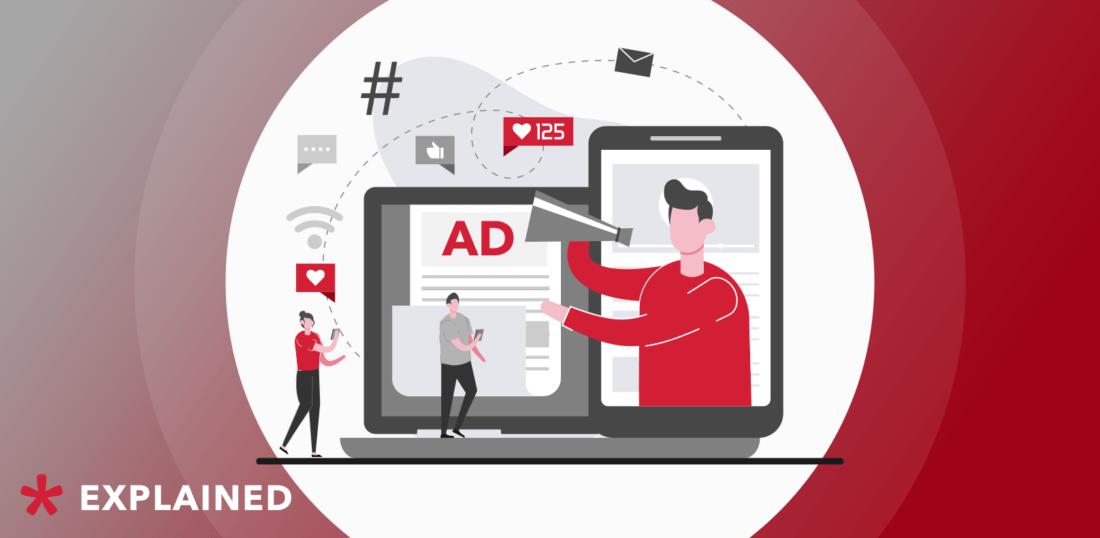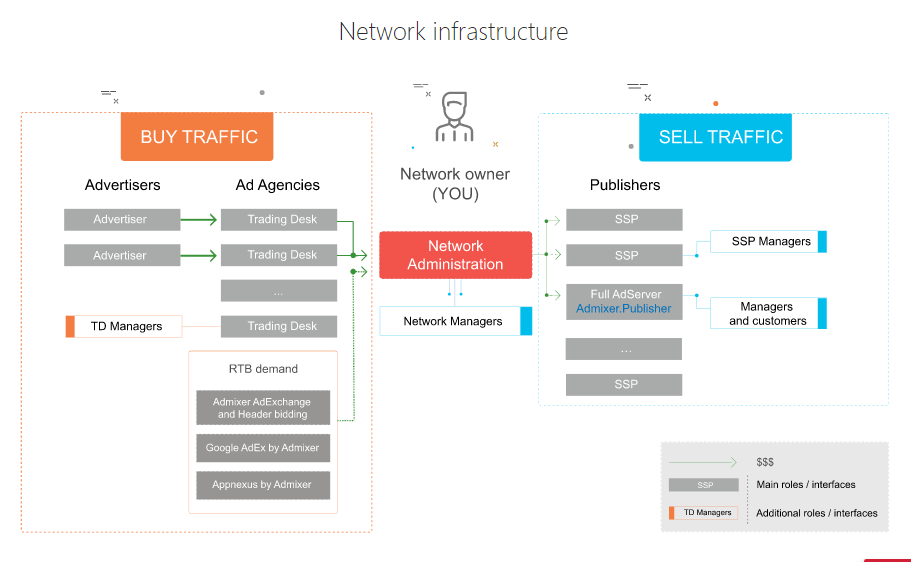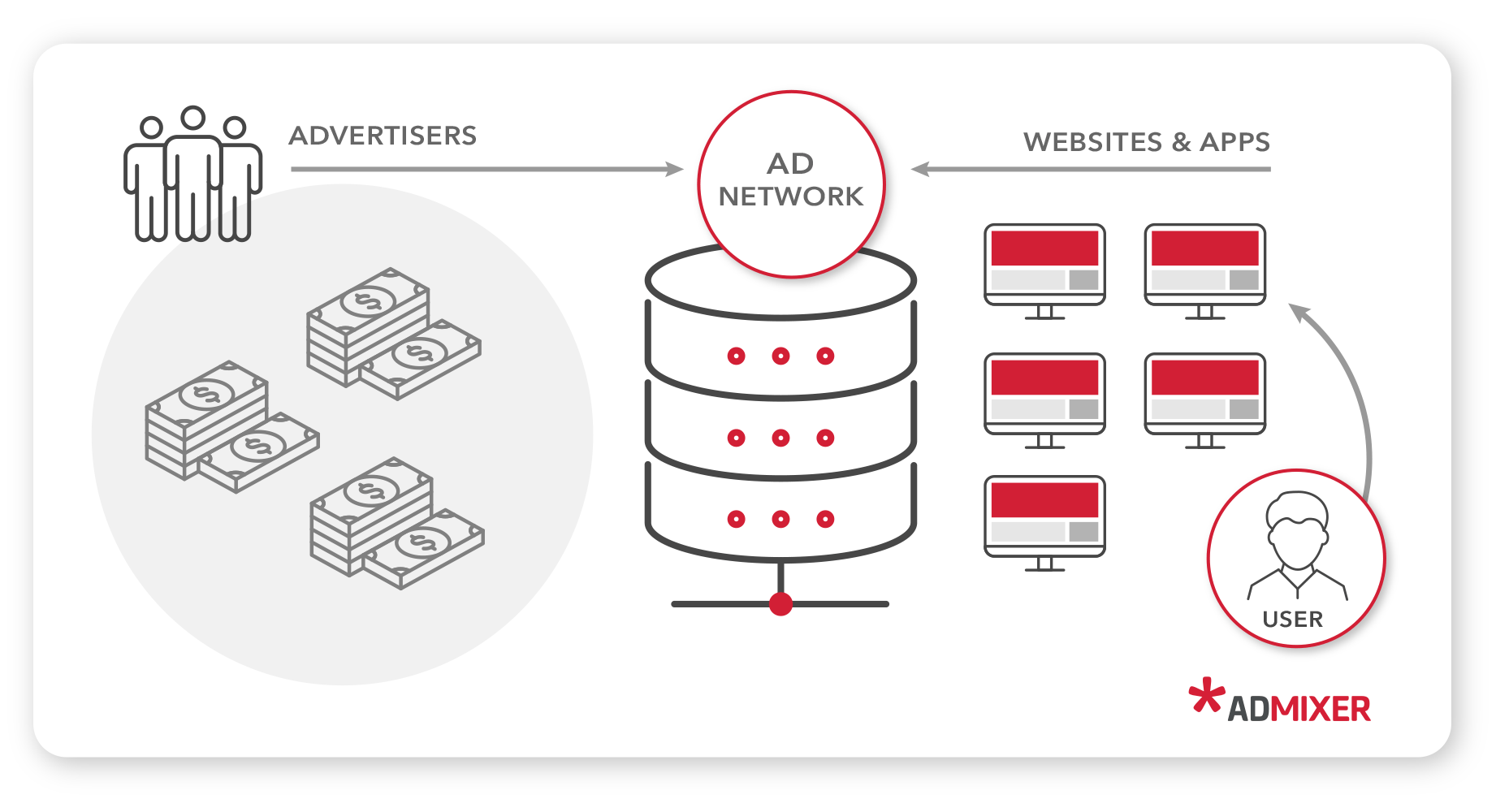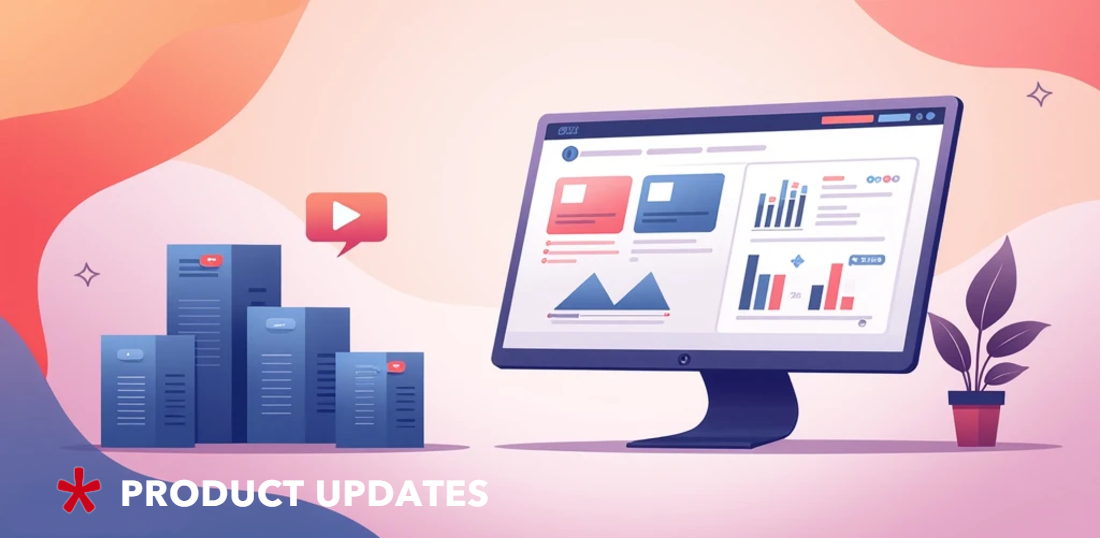
How to build up your own ad network
Want to set up your own ad network? Don’t know where to start? You might consider some of our advises.
So you’ve grown big enough to get on top of all ad delivery operations.
Ad network’s main job is to regulate relationships between the selling and the buying sides. You get both publishers and advertisers under your wing and control their operations.

An ad network takes on a lot of responsibilities. Your advertisers need to monitor the complete and complex picture, take decisions and receive reliable traffic only.
Why do you need to create an ad network?
Suppose you have a website, mobile application, or media — you are a publisher with a resource where you can post advertising content. Advertisers are ready to buy impressions (inventory) from you, but in order to agree on placements, you need to spend time discussing the timing, volume, and cost, and then sign an agreement. Naturally, the advertiser will be interested in the lowest CPA, you are the highest. How to reach a consensus and optimize this process? The technology of an ad network will take care of the process.
What is an ad network?
Let’s start with a tour into programmatic. This is a method of buying and selling media advertising using technology when the advertiser purchases advertising impressions not directly from the resource owner but using a special platform. Impressions are sold by algorithms in real-time. Thanks to this, the publisher (owner of the media) can manage the advertising space more efficiently, sell traffic at the best price, and the manual process of negotiating and concluding contracts disappears from the chain.
An ad network is a platform for publishers. With its help, they can monetize the traffic of their platforms: websites, applications, streaming services, and other digital platforms. In most cases, ad networks sell inventory in an open auction using the RTB (Real-Time Bidding) method, but they can work directly with advertisers using Programmatic Direct.
The main tasks of the platform are optimization of publishers’ income and data analysis. The ad network acts as a liaison between the publisher, ad exchanges (Ad Exchange), and the Demand Side Platform (DSP). With the help of the latter, advertisers, media buyers and agencies buy ad impressions from publishers.

How to build an ad network?
With a white label ad network, publishers can work with multiple ad exchanges and DSPs in one interface. It is easy to integrate with Data Exchange Platforms (DMP) and Advertising Networks (Ad Network).
The ad network functionality gives publishers the ability to manage ad inventory and control campaigns. The ad network interface allows you to evaluate campaign details, change ad slot formats, manage cost per thousand impressions (CPM), all in real-time.
The ad network saves a lot of publisher time. Previously, media buying took place in the form of business meetings, where both parties agreed on a suitable price. Thanks to the ad network, everything happens automatically, in a few seconds. During this time, the platform manages to analyze all the data and display ads on the screen of the site user.
Another big plus of the ad network is the ability to set the right price. Now the publisher himself sets the lower limit for the placement cost. This can be the price for the entire channel or for a specific client. And thanks to auctions, the price is determined by current supply and demand.
In addition, ad network helps publishers restrict access to certain brands or product categories that they do not want to advertise on their sites.
How to build your own ad network?
The ad network concludes transactions on behalf of the publisher in automatic mode, and the purchase and sale process takes place using RTB auctions or directly through Programmatic Direct.
In RTB, the entire process is centered around the bid – the cost that an advertiser is willing to pay for an impression. The publisher sends a request for bids (bid request), to put their ad space on the market in order to offer their traffic at the auction. The request contains information about the user who is currently on the site and the desired price per impression. In response, the advertiser sends information about the ad that it wants to display. The ad network evaluates the request, compares it to the available inventory, and negotiates. The whole process takes milliseconds. After that, an auction takes place, and the highest bid gets the right to display the ad.
To protect the site from scams and inappropriate, low-quality ads, ad network allows publishers to use white and blacklists of advertisers.
Why for an ad network you need publishers?
The publisher has access to information about the demand for inventory.
The platform allows you to receive applications from several advertisers at the same time, thanks to which the publisher can achieve the highest possible income.
With an ad network, publishers can sell their inventory on multiple ad exchanges, participate in various auctions and close direct deals, effectively monetizing their traffic.
The platform analyzes audiences, thanks to which the publisher better understands its value in the market and optimizes its strategy. Ad network allows you to set starting prices for specific buyers and channels.
What is your gain?
Your markup. You can also take additional payment for operational management.
When you’re creating any network, it’s all about making contacts.
Build networking to gather your potential clients.
You will be selling the traffic from publishers that you connect to advertisers. So you need to be sure the traffic is safe. There are also some preferable criteria for publishers:
- English or Major European language,
- min 25% of all traffic must be from the USA or EU,
- no explicit or violent content.
The recommended volume of overall traffic for launching an ad network is 20-100 mln impressions per month.
You also need a reliable ad server. The ad delivery of your connected clients is run through it.
The top notch ad server needs to have the following features:
- helpful manuals,
- extended targeting options,
- nicely visualized reports,
- analytical tools,
- free package or trial period.
Remember, that you are not obliged to build your own technology. There are ready-made solutions, where you can find all of these nice-to-have features.
Such solutions allow you to:
- Connect to proven monetization sources.
- Use the tech capabilities of someone else.
- Be flexible and widen your operational reach.
- Reach the maximum of your potential profit.
As you can see, the idea of creating your own complex technologies should not stop you. White label ad servers are available to buy. Use one, make it branded, build your customer community and connect the dots. Here’s your ultimate guide on how to choose technology for ad networks.




